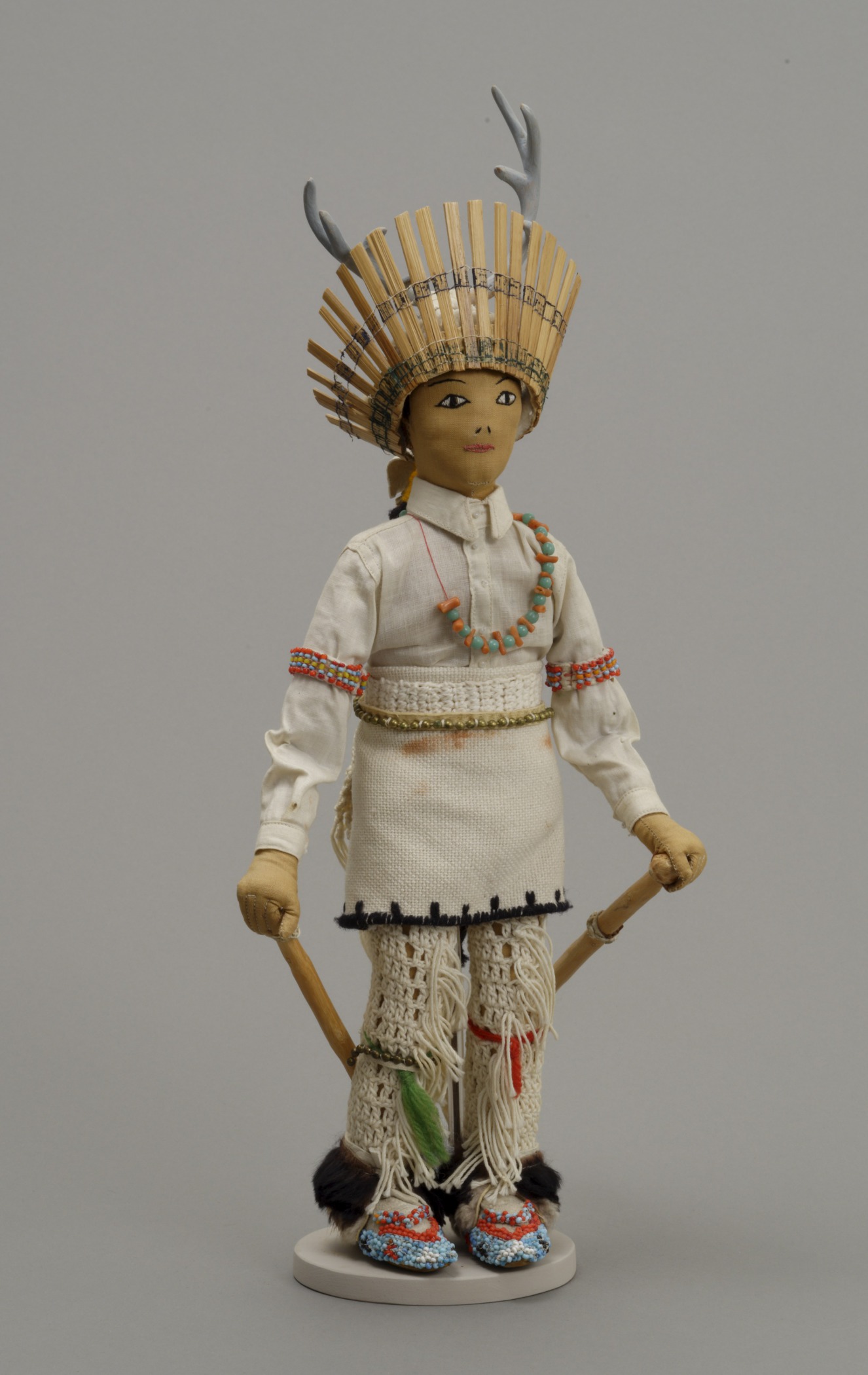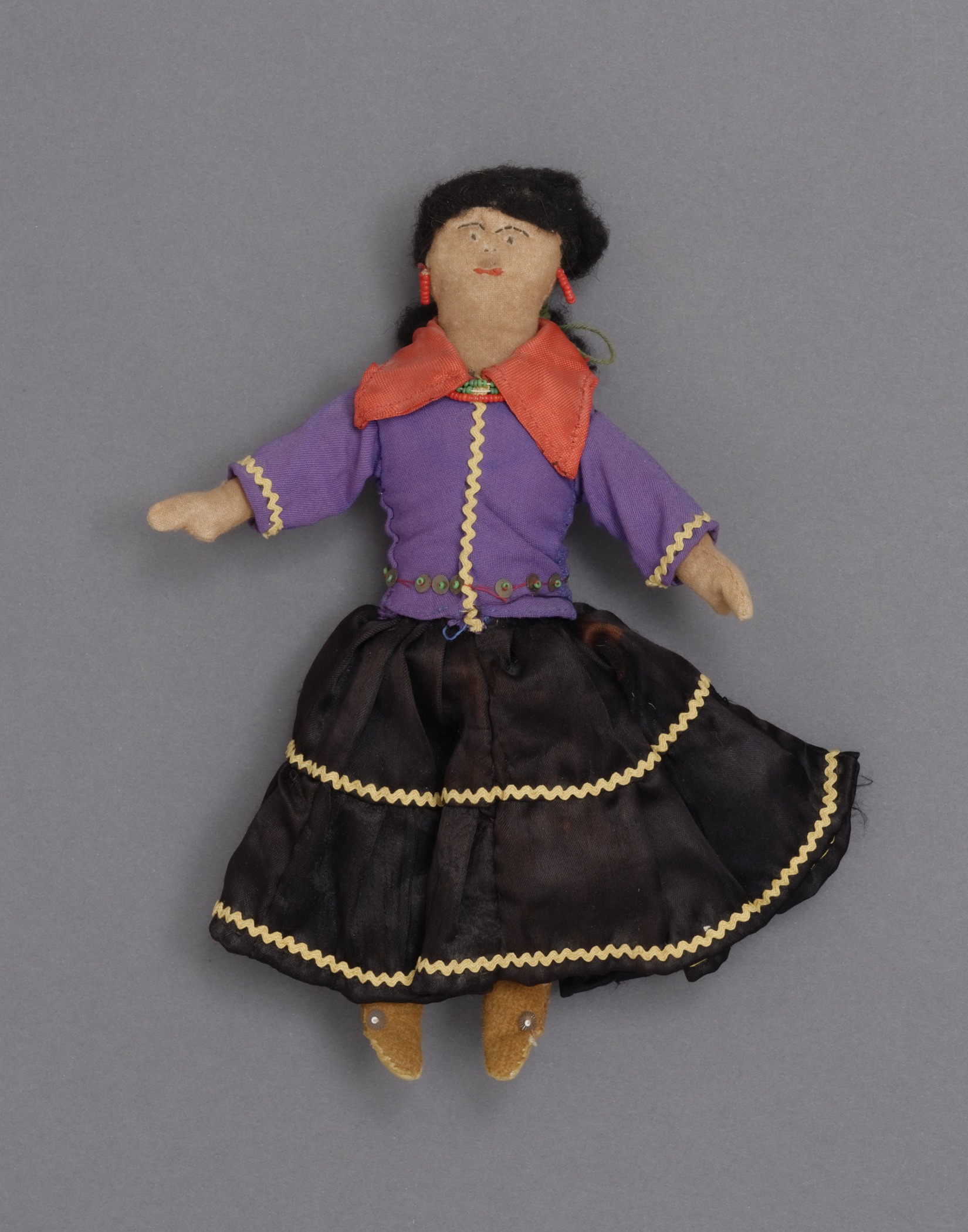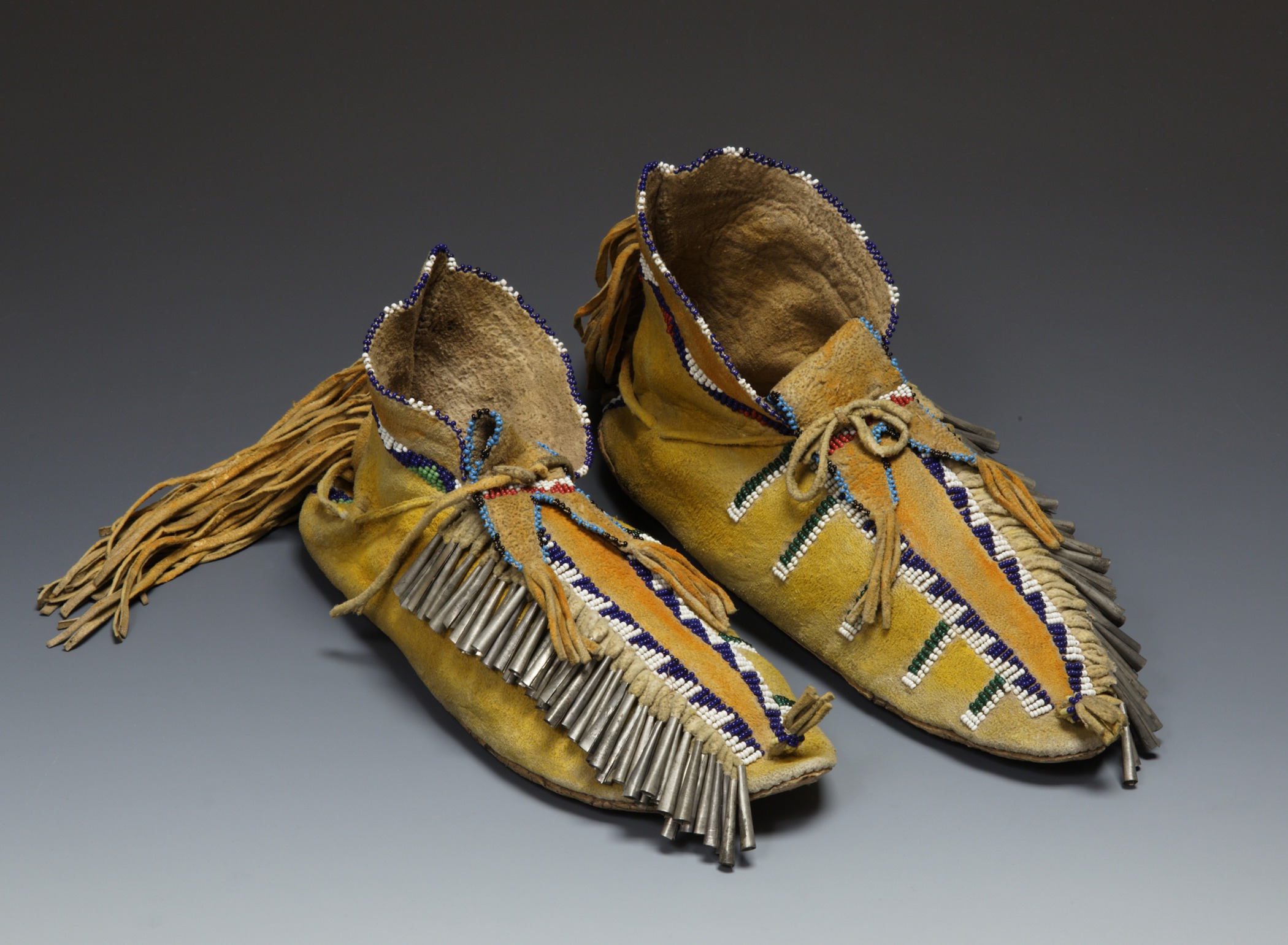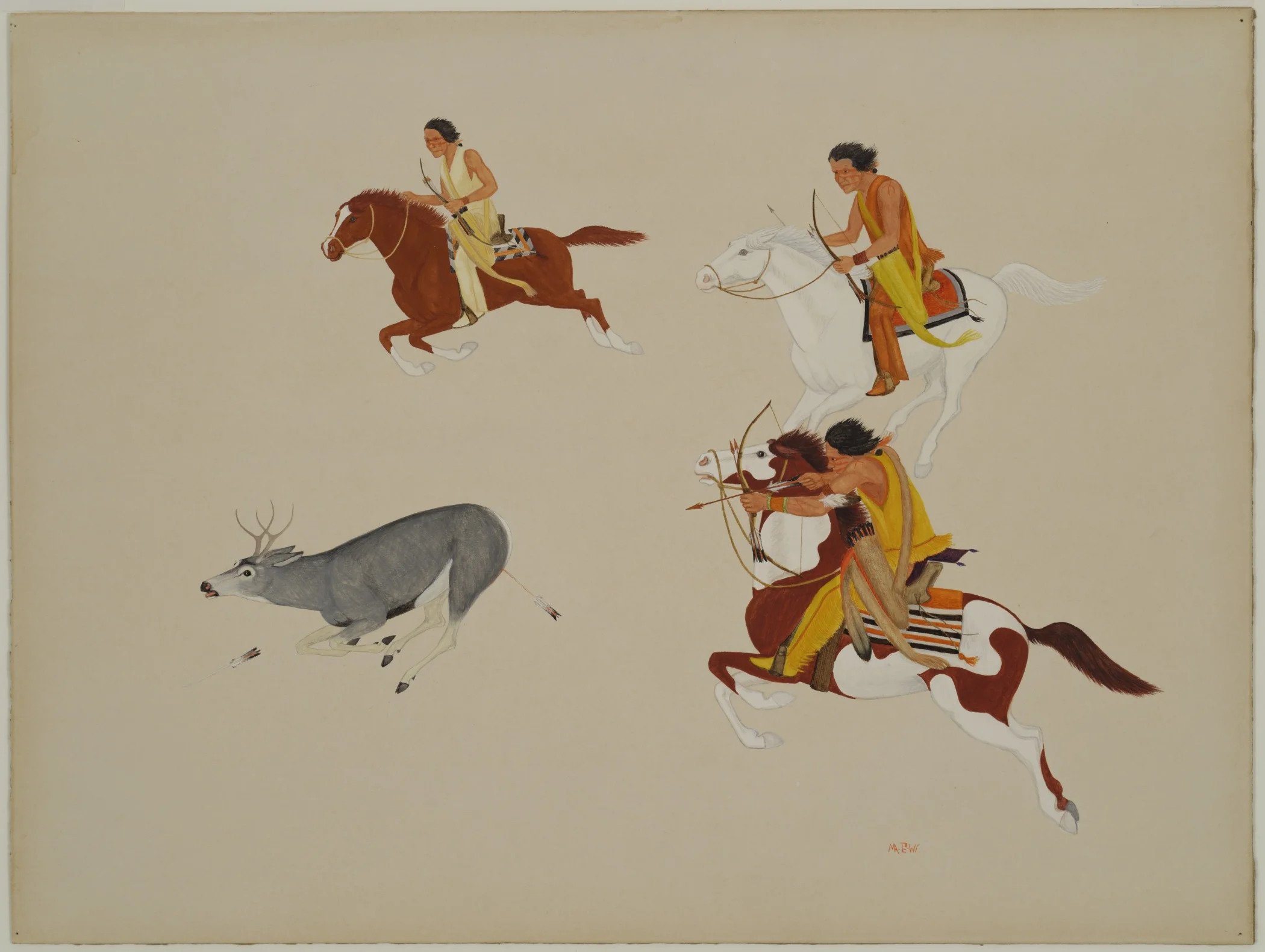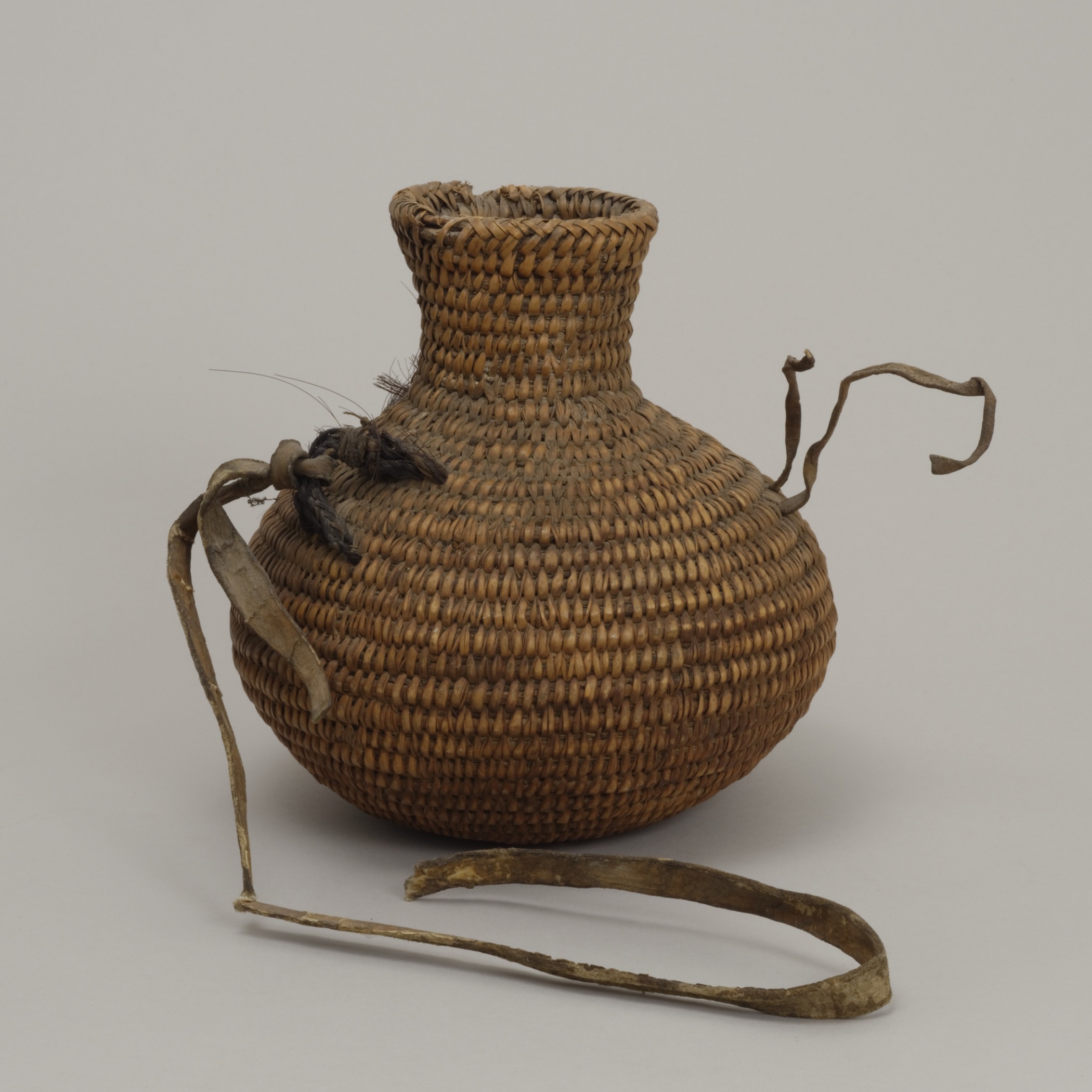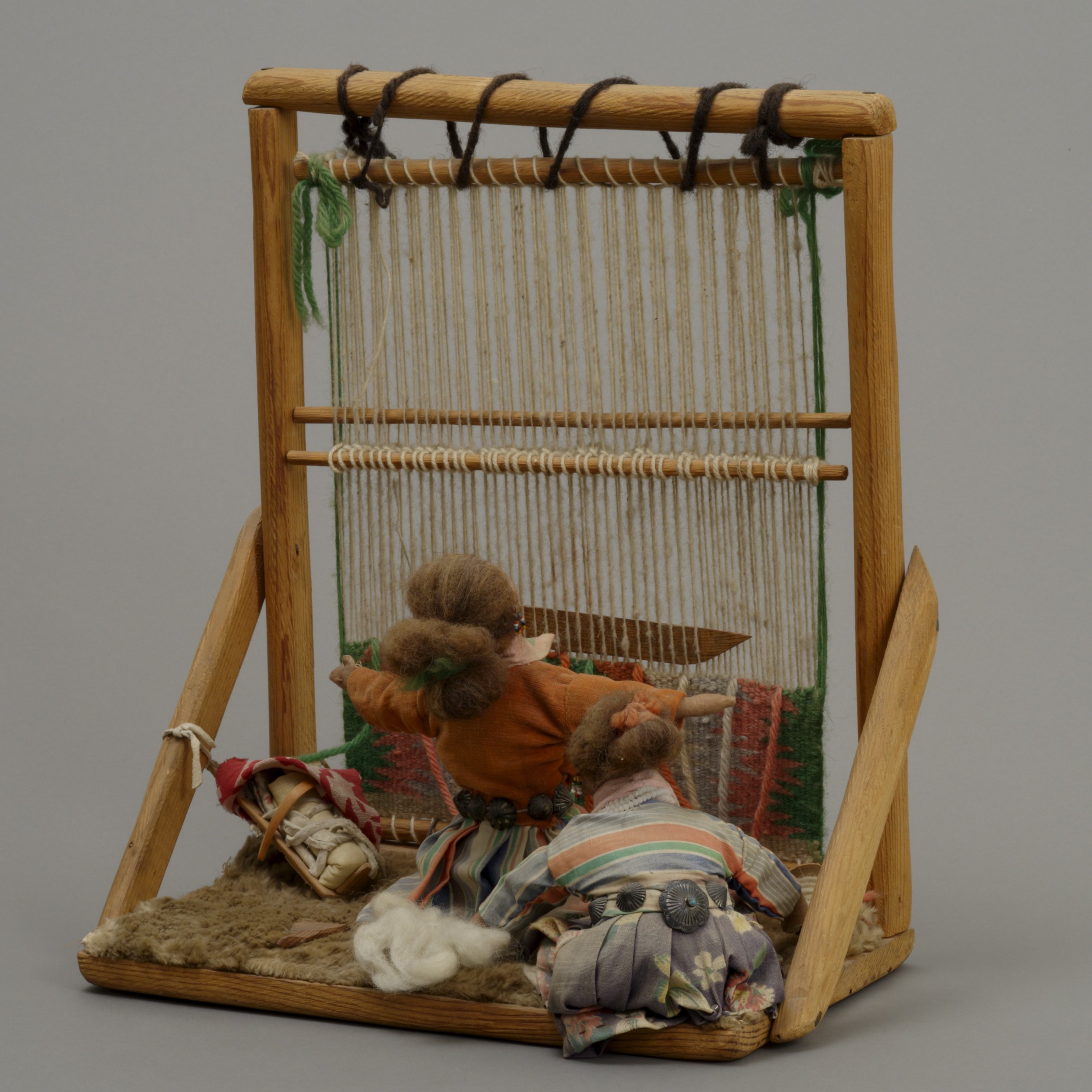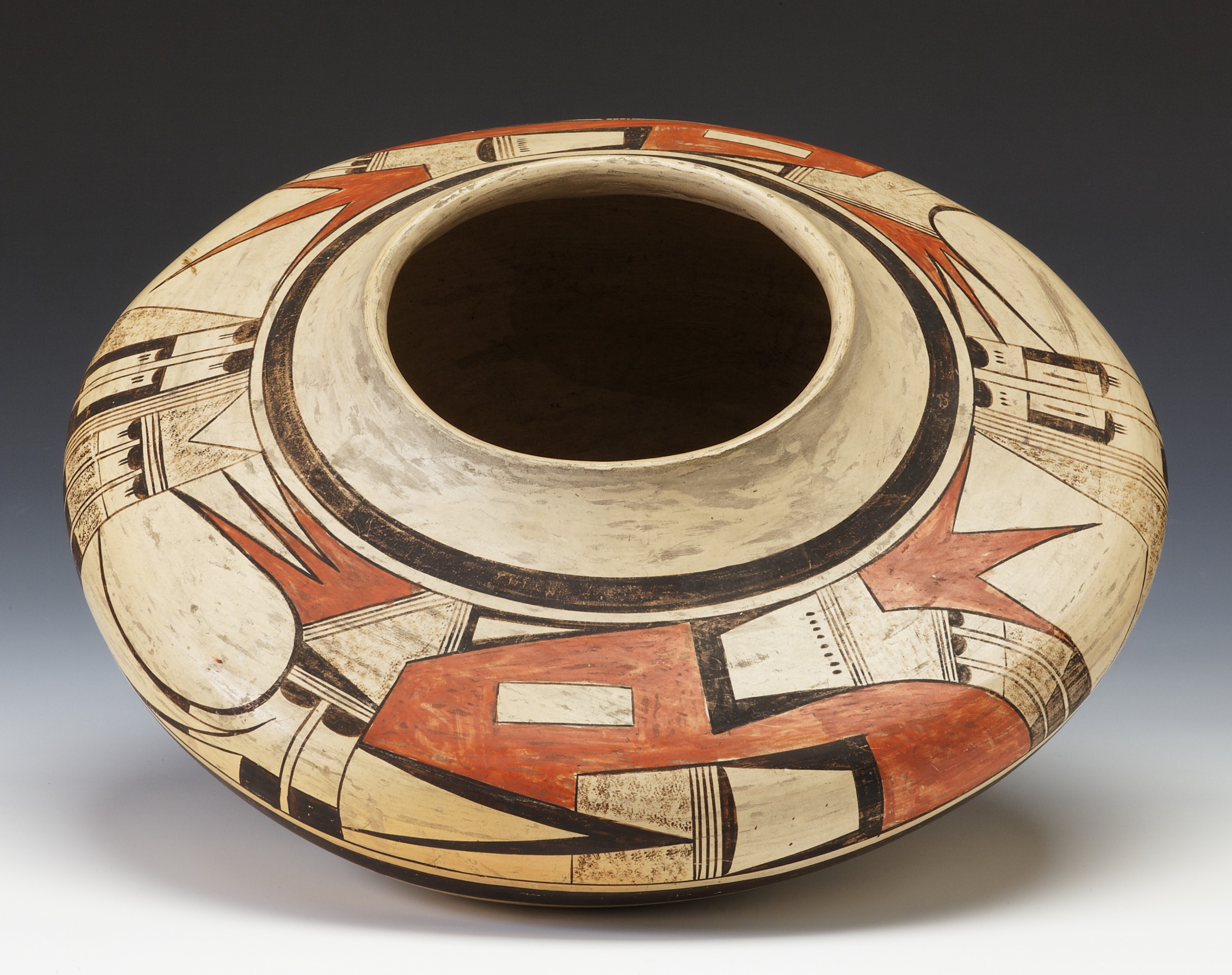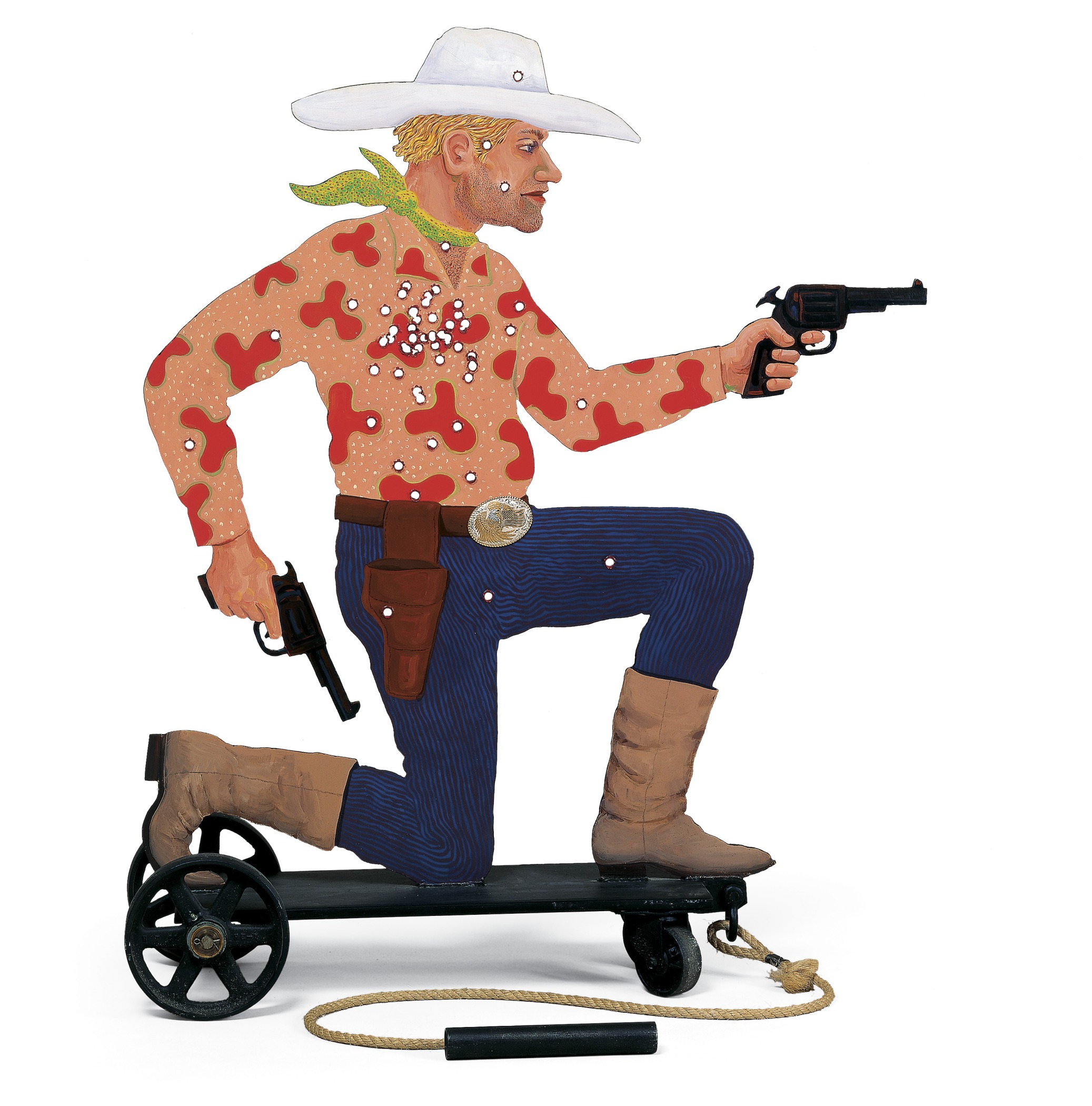Clothing worn by native groups in the Southwest varied from people to people and changed over time. Early on, clothing was made entirely of natural materials like buckskin, cotton, yucca, and feathers. Later, clothing incorporated natural materials made from the sheep and cows brought by Europeans and trade items like beads, sequins, and metals. European clothing styles, especially those of the Spanish, influenced native dress, and native dress, in turn, influenced the clothing of Europeans. Moccasins, for instance, an extremely versatile, comfortable form of footwear, were made for personal use and for sale to Europeans anxious to own and wear them.
Native-made dolls illustrate clothing styles from the past that were worn for everyday and special occasions. Made with exacting care, these dolls replicate the methods and materials used in the creation of full-sized clothing.
Today, native people living in the Southwest have adopted mainstream clothing but many continue to make traditional clothing for special occasions and gatherings. This type of clothing is called regalia. The act of creating and wearing regalia is highly personal and sacred. It celebrates cultural identity, individual expression, and connects the maker and the wearer to his or her past and present community.



